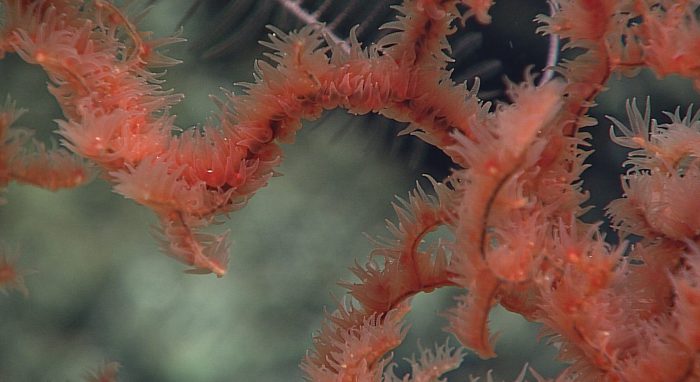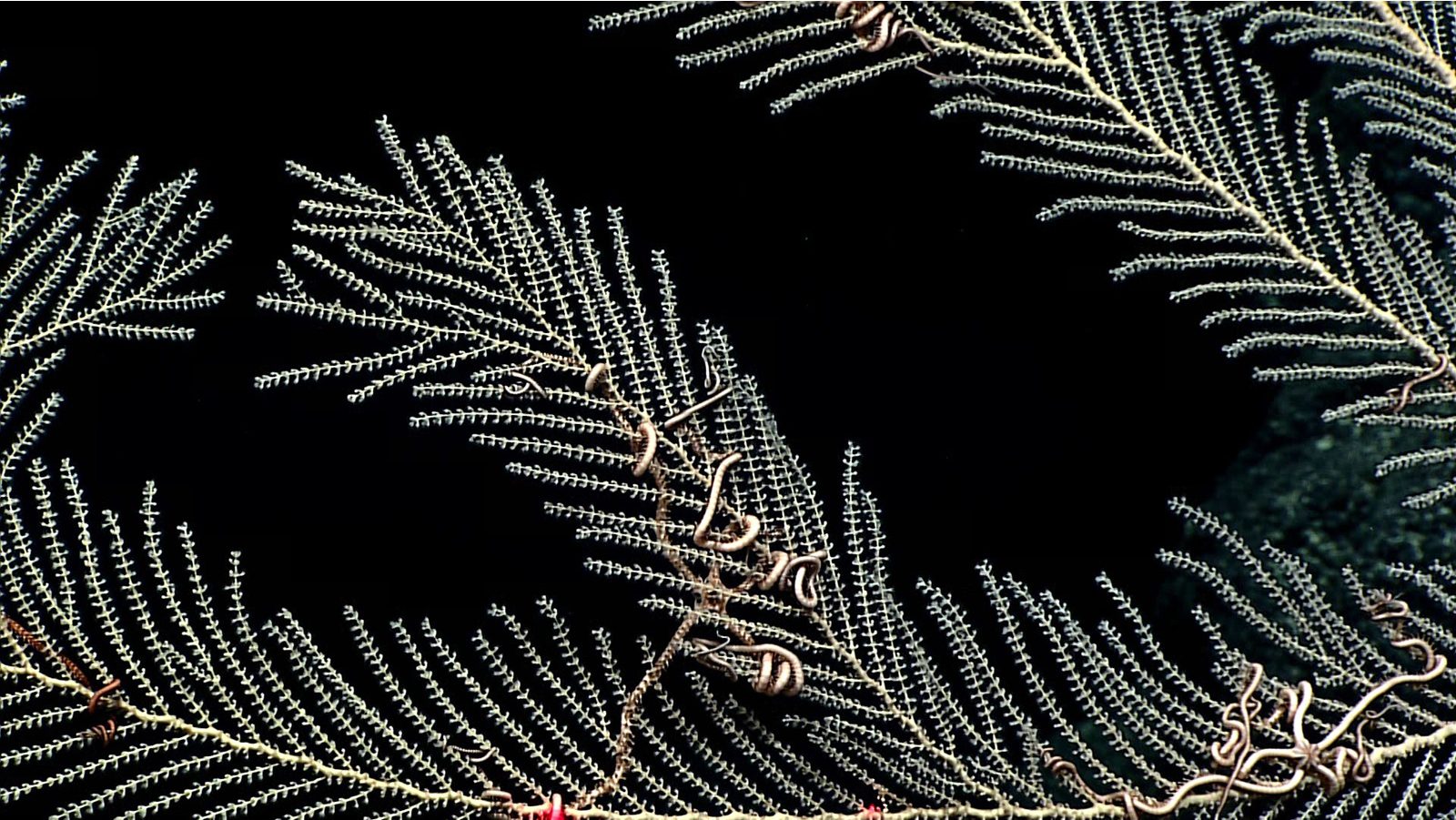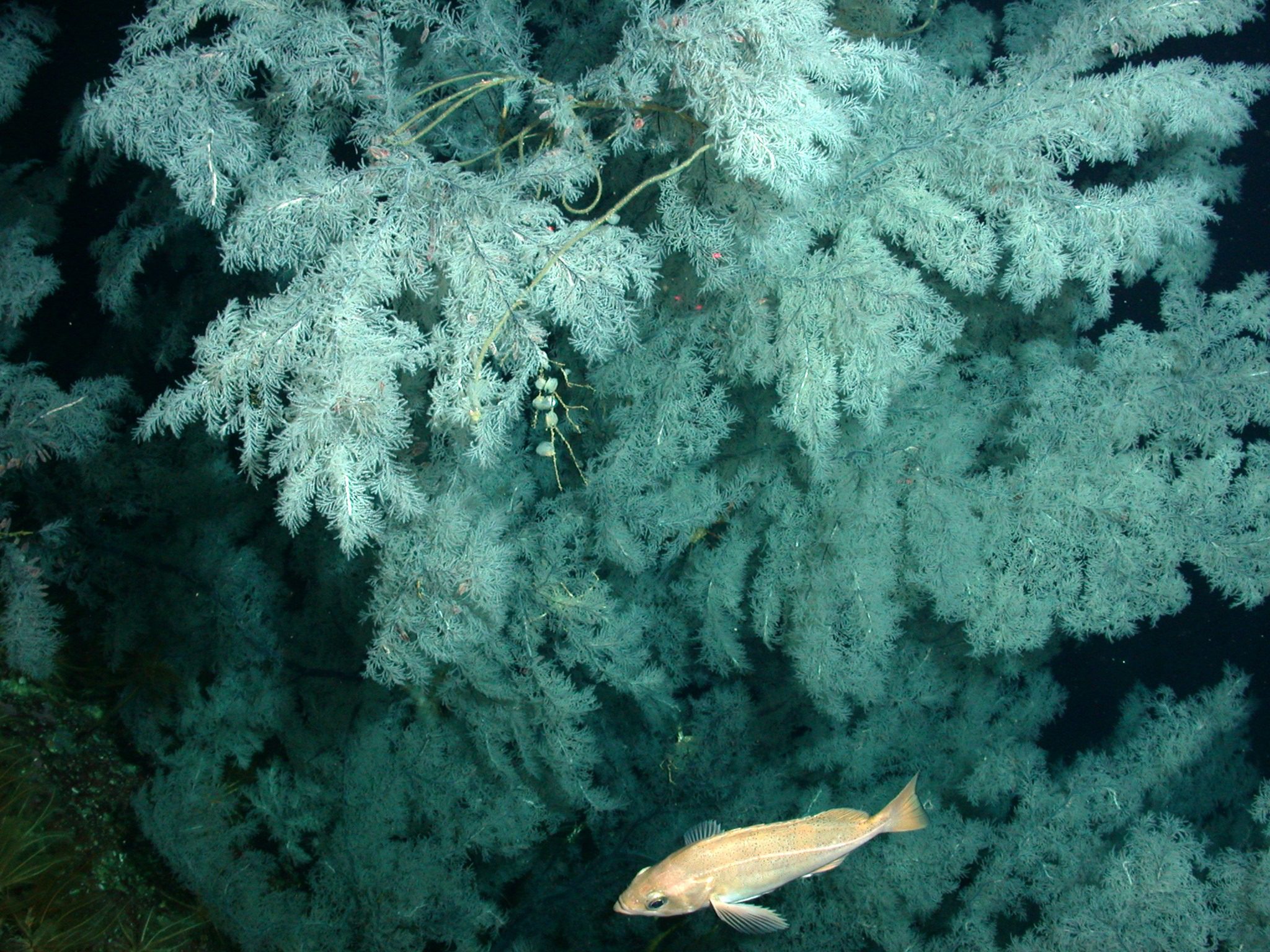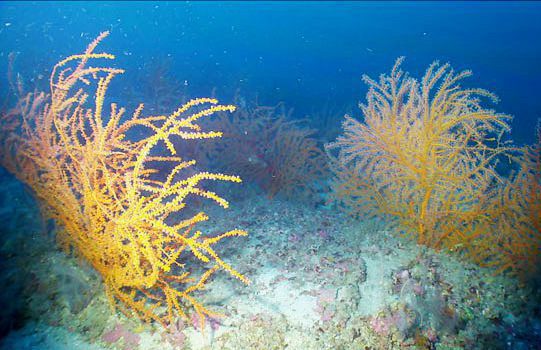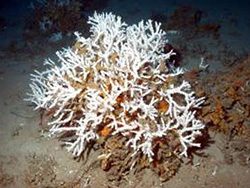Some of the oldest known benthic marine organisms are black corals of genus Leopathes. These ancient deep-sea corals (Leiopathes spp.) are very slow-growing black coral species. In the Gulf, large colonies of the black coral Leiopathes glaberrima have been estimated to be over 2,000 years old. They are characterized by their black or dark brown… Continue Reading Ancient Deep-Sea Corals
Deep-sea
Deep Sea Soft Corals
Deep-sea soft corals (Callogorgia spp.) are abundant foundation species (species which built main reef structure), often occurring as extensive fields of colonies in the upper bathyal region of the deep sea and found between 650 – 3280 feet deep. Colonies of soft corals create habitat for a wide variety of animals. They, often serve as nursery… Continue Reading Deep Sea Soft Corals
Deep Sea Black Corals
The deep-water environment found off the west coast of Florida proved to be a good habitat for diverse deep-water coral communities. Black corals (or Antipatharians) are a group of branching corals often associated with deep reef habitats. Although their exterior flesh is usually red, white, or orange, their internal skeleton is black. Black corals can live… Continue Reading Deep Sea Black Corals
Orange Sea Fans of the Deep
Orange sea fans (Swiftia exserta) or red polyp octocoral are a type of gorgonians that belong to the group of non-photosynthetic cnidarian species. These sea fans occur throughout the west Atlantic in fairly deep (e.g., 60 to 1600 feet) and nutrient-rich waters along coastal areas with moderate currents. Colonies are fan-shaped with orange to red stem… Continue Reading Orange Sea Fans of the Deep
A closer look at the Ivory Tree Coral
The ivory tree coral (Oculina varicosa) can be found in shallow and deep waters. In shallow waters, it is often patchily distributed on coarse shelly reef. However, in deeper water, it can occur as a massive, bush-like aggregation. Oculina reefs typically occur in regions on the shelf edge where water flows upward from depth. It… Continue Reading A closer look at the Ivory Tree Coral

